Nick Smith: ‘A Sustainable Government’
Hon Dr Nick Smith MP
National Party Environment,
Conservation and Climate Change Spokesman
13th Annual Nelson Rotary Speech – ‘A Sustainable Government’
Embargoed until delivery Wednesday 23 January 7pm
‘Sustainability’ is viewed by the Beehive as the key to a 4th term in government. The Prime Minister used the phrase ad nauseum – 42 times in her annual speech to Parliament last year. In this speech I wish to put under the microscope the sustainability record of the Government during its three terms on the ten major environmental issues facing New Zealand.
1. Greenhouse Gas Emissions.
There can be no question that the number one environmental issue is pollution from increased greenhouse gases in the atmosphere and the destabilising of the earth’s climate systems.
It has become the hot topic of our time. The Al Gore movie “An Inconvenient Truth’, the British Stern Report, and last year’s UN Climate Change report that earned it a Nobel Peace Prize, have brought the issue to the top of the political agenda both domestically and internationally. At APEC, the Commonwealth Heads of Government meeting and at the UN Conference in Bali last year that I was privileged to attend, the world is focused on the environment like at no time in global history.
On the 1st of January this year the Kyoto Protocol, signed by National in 1997 and ratified by Labour in 2002, came into effect. It commits New Zealand to stabilising our greenhouse gas emissions at 1990 levels over the next five years and if we don’t, we must pay.
Labour came to office in 1999 criticising the Kyoto target as too modest, saying a 20% reduction in emissions was required by 2005. Helen Clark has upped the ante still further, saying last year that New Zealand will be the first carbon neutral country in the world.
The huge credibility problem is Labour’s record over the past eight years. Emissions have been ballooning like there is no tomorrow and New Zealand does not now have a hope of meeting its Kyoto target. The domestic debate over whether New Zealand should be a world leader or a fast follower on climate change was viewed with amusement in Bali: It’s like arguing whether we are going to win gold or sliver at the Olympics when we came last in the heats.
The latest official United Nations figures were published in November and showed an increase in emissions from 69 million tonnes in 1999 to 77 million tonnes in 2005.
This 12% increase compares to Labour’s promise of a 20% reduction by 2005.
It compares internationally to an average increase across the OECD over the same years of 3%. Australia increased 8%, the US 5%, Japan 2% whereas the UK achieved a 2% reduction. New Zealand’s figures were rated 18th worst out of 23 OECD countries by both the UN and the German Watch Climate Change Performance Index.
The growth also compares poorly to the record of the 1990’s where annual growth was at half the rate.
The part that will hurt most is the degree to which New Zealand will fail its Kyoto target.
In 2002, the Government told New Zealanders we stood to make half a billion from ratifying the Kyoto Protocol. They rubbished those who dared question these numbers and accused those who suggested New Zealanders might have to pay as irresponsible.
When I dubbed it the ‘billion dollar bungle’ the Government said I was scaremongering and stood by their figure of $360 million. However, in 2005, Labour was forced to admit New Zealand would fail Kyoto and we would face a bill of hundreds of millions. Then in the pre-Christmas rush, the Government admitted a figure of $956 million. This is equivalent to every New Zealand household having to pay $400 to other countries, most probably, Eastern European, for the Government’s policy failures on climate change.
A re-election campaign on sustainability is not sustainable when the Government’s record on climate change after eight years in office is the highest emissions ever, a growth in emissions amongst the worst in the developed world, and an admission that New Zealand will miss its Kyoto target by a billion dollars.
2. Forestry
The second related issue on which Labour’s sustainability message is at odds with its record is forestry.
The key difference between Australia meeting its Kyoto targets and New Zealand being way over, is that Australia has planted an additional 500,000 hectares of trees this decade whereas New Zealand has been deforesting at record rates.
Forestry is critical to sustainability in two important respects. The first is that trees capture CO2 as they grow and store billions of tonnes of carbon. The carbon stored in New Zealand’s forests is equivalent to 100 years of emissions.
The second is the important role forests play in preventing erosion. New Zealand has nearly one million hectares of highly eroding hill country. The best hope of preventing further soil loss is having these steep hills reforested.
New Zealand’s record of forestry planting post-World War Two was pretty impressive. Every single year from 1951 until 2003 New Zealand planted more trees than it cut down, at an average of seven million additional trees per year. The Government’s decision in 2003 to deny carbon credits to foresters destroyed investor confidence in the sector. Every year since has seen record felling, with an estimated 10 million trees lost in the past four years.
We don’t have the official deforestation figures for 2007 yet, but it is estimated to be worse that the three previous years combined and has been described by media as a ‘chainsaw massacre’. Foresters have rushed to avoid liabilities arising from retrospective legislation which took effect on the 1st of January this year.
A re-election campaign on sustainability is not sustainable when the Government has the worst forestry record of any administration since World War Two with the net loss of 15 million trees.
3. Water
One of New Zealand’s most precious resources is our fresh water.
We have fresh water in abundance. In fact, more rain falls on New Zealand than Australia despite Australia being 16 times our size. But the management of New Zealand’s fresh water resources has major deficiencies and is putting our clean, green record at risk. It was highlighted in the OECD environment report on New Zealand last year and used by British farmers to justify protectionism at an environmental conference I attended in London in November.
The facts are that water quality, particularly in lowland streams, is deteriorating. Water quality measurements in Canterbury lowland streams showed the proportion that are in very poor condition increased from 29% to 73% in just five years. Surveys nationwide also show a big increase in the number concerned about water quality.
Lake Karipiro, in the Waikato, where we are to host the 2011 World Rowing Championships, and Lake Ellesmere in Canterbury, are just two examples of where water quality is poor.
This issue is not just about increased pollutants from intensified farming, but also about increased draw -offs for irrigation. I cannot take my children swimming at river spots where I swam as a boy because today, with so much draw-off, they run dry. There is, in many parts of New Zealand, a rush for water rights not dissimilar to the gold rushes of earlier times, and yet the Government has refused to take any leadership.
The issue of water management has got so bad that the Government’s programme has been dubbed the ‘Water Programme of Inaction’, even by its own senior officials.
A re-election on sustainability is not sustainable when, after eight years in office, the Government has presided over the worst deterioration in water quality, with the water in many iconic lakes and rivers unfit to drink or swim in.
4. Biodiversity
A fourth area of policy failure has been protecting New Zealand’s unique flora and fauna. We have more species, proportionate to population, at risk of extinction than any other country on earth.
The key to protecting these species is effective pest control and retention of habitat. On both fronts the Government is exposed.
The Government’s pest control budget has, in real terms, declined under Labour, and this is despite substantial increases in the land area managed by DOC.
To retain habitat, Labour repeatedly promised a National Policy Statement under the Resource Management Act. Last year, to the huge disappointment of environmental groups, it broke that promise.
A re-election campaign on sustainability is not sustainable when less money is being spent on pest control; a key promise to deliver a National Policy statement on protecting native species is broken and when 4,500 hectares of habitat is being lost annually.
5. Oceans
New Zealand’s ocean area is the 4th largest globally and 18 times our land area. Effective management of this area is crucial to our environmental credentials.
While we have 30% of our land area protected in reserves, less that 1% of our coast is similarly protected. The Marine Reserves Act is long outdated. In 2001 a bill was introduced to update and reform the Act, but seven years later it sits marooned in the select committee. It is a disgrace when a bill sits around this long. I am the only member of the select committee who has heard the submissions and half the Parliament has changed since the Bill was introduced. It shows a complete lack of commitment to marine conservation.
There has also been the debacle of the oceans policy. Millions have been spent on the Oceans Policy Review dating back to 2001 but again no progress has been made. A key problem that needs addressing is a lack of any environmental protection laws beyond the territorial sea encompassing 80% of our oceans. This is becoming increasingly urgent with mining proposals off the coast of both the North and South Islands.
A re-election campaign on sustainability is not sustainable when important marine reserves legislation is left stagnating for seven years and when in 2008 we still do not have any environmental rules for 80% of our ocean.
6. Renewable Energy
A sixth area where this Government is untidy is over renewable energy. Despite all the hype about wind power and renewables, New Zealand has gone consistently backward in the proportion of our electricity generated from renewable sources like hydro, geothermal, wind, and solar. New Zealand produced less electricity from renewable resources in 2007 than in any year in our history.
An embarrassing fact for the Government is that more energy capacity from coal, oil, and gas has been built under this Government than in any time in our history since the first light went on in Reefton.
The massive new E3P gas turbine was commissioned last year and is the biggest new station since Huntly in the 1970’s. It was built by state company Genesis with a Government guarantee. In 2002, the Government built the $150 million oil fired Whirinaki station. There is nothing clean and green about burning oil to produce electricity. Meanwhile, the Government has blocked significant renewable energy projects like Project Aqua and Dobson.
A further powerful statistic that puts a lie to any commitment by this Government to renewable energy is that the proportion of electricity produced from coal has trebled from 4% to 12%. The growth in coal generated power has outstripped new wind power by ten to one.
A re-election campaign on sustainability is not sustainable when New Zealand has gone backwards in the proportion of electricity produced renewably and when coal-generated power has trebled.
7. Energy Efficiency
Nor has the Government done any better on energy efficiency. It spent $100 million on its 2001 Energy Efficiency Strategy only to discover five years later that the improvements of 0.4% per year were less than the 0.7% of the previous five years.
There are problems with the Government’s solar water heating scheme because it is so bureaucratic and costly to administer. This is so typical of where the Government has gone wrong.
When launched a year ago, the goal was to double the number of installations. It is ironic that this industry was growing at 30% a year until the Government scheme was announced in 2006, and it has subsequently stalled.
Countries like Australia, China and Germany, on a per capita basis, are exceeding New Zealand’s solar installations by many fold.
A re-election campaign on sustainability is not sustainable when the incentives for solar are so cumbersome that they do more damage to the industry.
8. Biosecurity
New Zealand’s long geographical isolation has always exposed our environment and primary sectors to the risks of unwanted pests and diseases, but the Government’s management of biosecurity risks has been slow and ineffectual.
There have been 342 incursions since Labour came to office. The fiasco over didymo that saw it first discovered in October 2004, but no action taken to contain it for more than a year, has significantly contributed to it being spread throughout the South Island. The frustration of Nelson beekeepers over the lame Government approach to the infestation of varroa only furthered the reputation of a Government indifferent to biosecurity. The critical reports by the Auditor-General in both 2002 and 2006 on biosecurity expose a system that needs serious strengthening if we are to protect New Zealand from unwanted pests.
9. Outdoor Recreation
The ninth issue I highlight is our outdoor recreation. Part of looking after our environment is also about looking after the facilities and tracks that enable us to access the stunning places that make New Zealand special.
You will be shocked to know that two thirds of DOC’s tracks do not meet their own standard. The Auditor-General was rightly critical of the Government for this and for the fact that, by 2008, the Government had promised all would be up to standard.
10. Genetic Engineering
The final issue on genetic engineering I include with some reluctance as it has in the past attracted attention out of proportion to the level of risk.
My criticism is that six years after spending $5 million on a Royal Commission of Inquiry into genetic modification, half the recommendations have not been implemented.
A re-election campaign on sustainability is unsustainable when the Government’s record on biosecurity is weak; when two thirds of your DOC tracks are not up to standard, and after six years, half the recommendations of a Royal Commission on genetic modification have not been followed up.
These ten policy failures give some context to the political kerfuffle engulfing the Ministry for the Environment in the second half of last year that saw the Minister sacked and the Chief Executive walking the plank.
The reason Ministers were interfering in the appointment of communications staff was that the Government was seriously exposed over its environmental track record and could not rely on independent public servants to spin their way out of their policy failures.
There is a deeper problem with the Environment Ministry. It is a relative newcomer to the core public service alongside experienced departments like Treasury, Foreign Affairs, and MAF. The prominence of environmental issues today has thrust it to a higher level. It is not prepared for, nor experienced enough to survive the big debates in which it is now embroiled.
One of the first priorities for an incoming National Government will be to build the Ministry into the sort of quality policy agency that will retain committed non-partisan public servants and a mature culture capable of the vital work needed to lift New Zealand’s environmental performance.
I confess that a good deal of this speech has been negative and challenging of the Government’s record. It is similar in tone to the criticism by Green Party co-leader Jeanette Fitzsimmons who, with her party, is becoming increasingly embarrassed at having propped up Labour for eight years.
The challenge for National this year is to provide a clear agenda of positive initiatives to tackle these issues.
Our Bluegreen vision document of spring 2006 set out in 30 pages over 70 proposals we have for tackling these questions. We will this year be refining these into our policies to put to New Zealand later this year.
The last challenge will not surprise you, it being election year. While I have been privileged to serve as the MP for Nelson since MMP was introduced in 1996, National has not won the party vote in Nelson. We got tantalising close in 2005. My goal in 2008 will be to convince Nelsonians that the future of New Zealand and this region is best secured by a change of Government and to win that all important party vote.
It will be an Invigorating year!
Ends
Attached: Supporting graphs
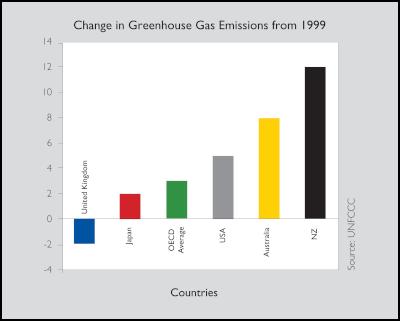
(1) Changes in greenhouse gas emissions
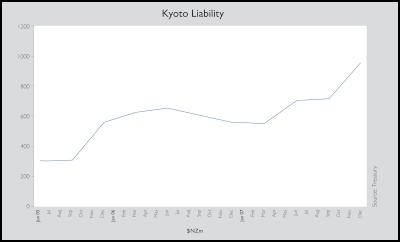
(2) Kyoto liability
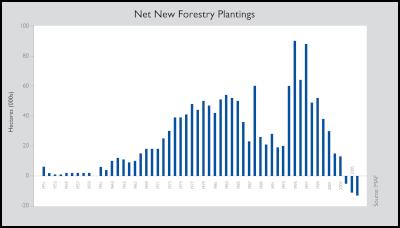
(3) Forestry plantings
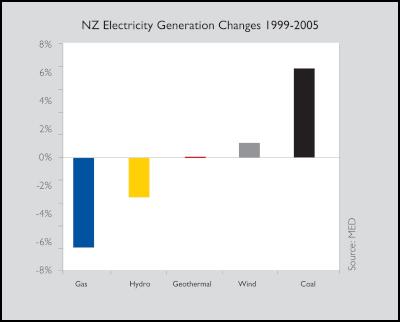
(4) Changes in generation
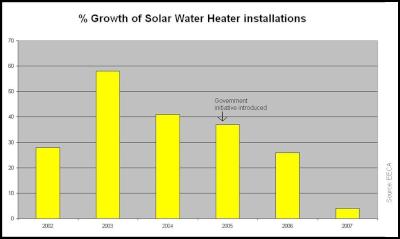
(5) Solar water heating installations


 Gordon Campbell: On Marketing The Military Threat Posed By China
Gordon Campbell: On Marketing The Military Threat Posed By China The New Zealand Remembrance Army: Victoria Cross And Hardham Cup Come Together For First Time In Over 100-years
The New Zealand Remembrance Army: Victoria Cross And Hardham Cup Come Together For First Time In Over 100-years RNZ Online: How The World Reacted To The Demise Of The Treaty Principles Bill
RNZ Online: How The World Reacted To The Demise Of The Treaty Principles Bill Te Matapihi: Response To Govt’s New Strategic Housing Partnerships: Progress, But Equity Gaps Remain
Te Matapihi: Response To Govt’s New Strategic Housing Partnerships: Progress, But Equity Gaps Remain Banking Class Action: Government’s Retrospective Law Change Threatens Consumer Protections
Banking Class Action: Government’s Retrospective Law Change Threatens Consumer Protections E tū: Journalists Respond To Grenon - Still No Commitment To Editorial Independence
E tū: Journalists Respond To Grenon - Still No Commitment To Editorial Independence Marlborough District Council: Kevin Judd Named Marlborough’s Newest Living Cultural Treasure
Marlborough District Council: Kevin Judd Named Marlborough’s Newest Living Cultural Treasure


